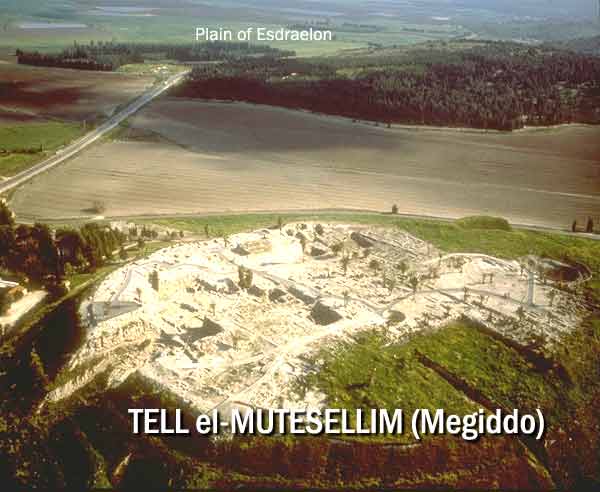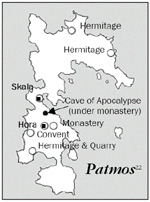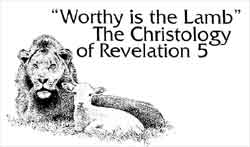|
I look forward to your feedback on this issue as well as anything else you would like to ask about. Beginning with issue 13, I will be responding to reader's questions and comments. Please send your question or comment right away.
The Master taught us that spiritual lessons are flowing past us continually if only we have the eyes to see them. He did. Where others saw nothing but the daily grind of their jobs, Jesus saw the miracle of grace given to men hired too late in the day, the seed of the kingdom germinating in different soils of human hearts, and vessels filled to overflowing with God’s blessings. While his friends made their way to a party, Jesus perceived the significance of making the right response to God’s invitation, preparing for His arrival, and accepting the lowest seat at His table. All of life was transformed into a dynamic canvas on which the divine Artist painted scenes of crisis, conflict, and hope. Jesus saw the masterpieces because He was looking at life with spiritual eyes. I pray for eyes like that, but my vision is spotty at best. My world is much like theirs was; only the trappings are different. I ask myself, “Are spiritual lessons flowing past me too?” I am absolutely certain of the answer. Every workday, five days a week, I take the light rail into downtown Dallas. Only last week, this routine finally taught me a lesson about prayer. In case you're not familiar with a light rail commuter train, it runs on 25,000 volts of alternating current. All of this electricity races through lines suspended above the tracks. It is transmitted to the train through a spring-loaded arm called a pantograph. The energy, now on board, is converted into the direct current that supplies the train’s motors. Without that constant supply of 25,000 volts, the train would go nowhere. That pantograph has to be in constant contact with the high-power lines. Paul told the Thessalonians, "Pray unceasingly" (1 Thess. 5:17). Part of what that means is that we must continually stay in contact with God, who supplies us with the spiritual power we need to keep going. In other words, wherever we go and whatever we do, we have to maintain an awareness that we are in the presence of the Almighty. King David knew of this need. In Ps. 139:7-12, he asks: Where can I go from your Spirit? As a spiritual Being, unlimited by time and space, God is omnipresent and omniscient. Nothing happens to us that He doesn't know about, nor is there a place we can go that is beyond His presence. David's descendant, King Hezekiah, demonstrated his awareness of the same truth by his actions. Sennacherib, king of Assyria, ordered that his emissary read a threatening letter to Hezekiah and all of Jerusalem. As 2 Kings 19:14 reports: "Hezekiah received the letter from the messengers and read it. Then he went up to the temple of the LORD and spread it out before the LORD.” It is as if Hezekiah were saying to the LORD, " Here, read this!" Then, in the verses that follow, he asks the LORD to do something about it, and the LORD honors his request with an outstanding miracle. Devotional writers have long emphasized a spiritual discipline called "practicing the Presence." Nicholas Herman (c. 1605–1691), also called "Brother Lawrence," in what is now known as The Practice of the Presence of God, wrote:
Such a concept did not just spontaneously appear out of thin air. Jesus himself, just before ascending to the Father, promised his disciples, “I am with you always, even to the end of the age" (Matt. 28:20). Notice that Jesus neither says, "I was with you," nor does he say "I will be with you." He says, "I am with you always." This "I am" seems to run parallel to his statement to the unbelieving Jews: "I tell you the truth, before Abraham was born, I am" (John 8:58), “not I was.” If the parallel is a valid one, Jesus’ use of the present indicative seems to signify that he is not limited by time or any other constraint on his ability to be aware of our needs and to bless. A. B. Bruce explains it this way: I the Risen, Exalted, All-powerful One, with you my apostles and representatives engaged in the heroic task of propagating the faith. ...am, not will be, conveying the feeling of certainty, but also spoken from the eternal point of view, sub specie aeternitatis, for which distinctions of here and there, now and then, do not exist.... all the days, of which, it is implied, there may be many; the vista of the future is lengthening.... until the close of the current age, when He is to come again; an event, however, not indispensable for the comfort of men who are to enjoy an uninterrupted spiritual presence. —Expositor's Greek Testament. Ed. W. Robertson Nicoll. Reprint: Grand Rapids, MI: Eerdmans, 1980. 1:340. Like the power lines strung above the light rail train, the power is always present and available. We must, however, make and maintain our connection with that power. With a constant awareness of God's presence, we will include Him in every decision we make. We will give more care to where we go, what we do, and what we listen to, knowing that He goes with us, witnesses our actions, and hears what we hear. We will choose our words more carefully—not only the ones that express our petitions to Him, but all of our words—realizing that we cannot prevent Him from listening to us. And whenever we do pray, whether we offer praises, thanksgivings, petitions, confessions of sin, or intercessions for others, a constant awareness of God's presence bolsters our confidence that He hears our prayers and will answer them according to His will. Don't let your pantograph droop. Oil its hinges, fix its spring. Stay connected. [Back to Index] Review: The Battles of Armageddon by Eric H. Cline. Ann Arbor, MI: University of Michigan, 2000. Check price for new or used at Amazon
The sixth angel poured out his bowl on the great river Euphrates, and its water was dried up to prepare the way for the kings from the East. Then I saw three evils spirits that looked like frogs; they came out of the mouth of the dragon, out of the mouth of the beast, and out of the mouth of the false prophet. They are spirits of demons performing miraculous signs, and they go out to the kings of the whole world, to gather them for the battle on the great day of God Almighty.... Then they gathered the kings together to the place that in Hebrew is called Armageddon. When Cline writes of the battles of Armageddon, he is referring to all of the other times armies have fought in and around the city of Megiddo. In fact, Cline documents no less than 33 battles fought either right at Megiddo or in the immediate area—battles from as early as 1350 bce to as late as the Yom Kippur War of 1973. So many armies have contested this ground, in fact, that Cline can confidently state that more battles have been fought here than anywhere else on earth. The reasons Cline gives for this remarkable fact have to do with the geography of the site and the natural tendencies of armies as they choose the ground for their conflicts. Megiddo itself is a natural fortress, sitting atop a tell that now towers 70 feet above the land about it. It commands the entrance (or exit, depending on which direction you are marching) to a strategic mountain pass of the “Way of the Sea,” the primary road that for millennia has connected Egypt to Damascus and Mesopotamia, beyond. The pass empties out into a broad plain (the Plain of Esdraelon), flanked to the north by Mount Tabor, to the south by Mount Gilboa, and featuring at its center the Hill of Moreh. 
The tell of Megiddo has yielded
information about the time of Solomon, as well as the days of Omri.
<<Solomon's Megiddo
Omri's Megiddo >> (For more on Megiddo, see DeeperStudy's Study Links: Megiddo).
If a pro-Mesopotamian army controls
Megiddo and the Musmus Pass, it can thwart the designs of an opposing
Egyptian army seeking to invade Mesopotamia to the northeast. Likewise a
pro-Egyptian army has the best chance of stopping a Mesopotamian
invasion by making a stand at or near Megiddo. So it has been for
thousands of years. Even modern armies with tanks and aircraft have
dueled with virtually the same objectives as their ancient counterparts. Cline gives a detailed account of battle after battle, a few of which are recorded in the Bible, but most of which are not. The battle of Deborah and Barak against Sisera (Judg. 4–5) was fought here, as well as Gideon’s routing of the Midianites (Judg. 6–7). Nearby, King Saul and his son, Prince Jonathan, lost their lives battling the Philistines (1 Sam. 28–29, 31; 1 Chron. 10), and Josiah met his tragic death at the hands of Pharaoh Necho (2 Kings 22:29–30; 2 Chron. 35:20 – 36:1) on this same ground. Later battles involved Roman against Jews, Mamlukes against Crusaders, Napoleon against Turks, and more recently, the English against the Ottomans, and the Israelis against the Syrians. When Cline finally does address the Apocalyptic Armageddon, he approaches it with a humility that is refreshing compared to many who discuss it. He wonders aloud whether the battle will literally take place or is just a symbol of some kind. In fact, it seems that Cline leans over backwards to accommodate those who would make these verses the description of a literal battle predicted to happen some time in the future instead of another image in a seemingly endless succession of symbolic images that fill the Book of Revelation to the brim.
I wish Cline had at least surveyed the variety of interpretations of "Armageddon" which includes many more than the first two, to which he limits his discussion:
Mount Megiddo (interpreted literally)
– this would describe the gathering place for a great battle, though if we took it literally, it can hardly describe a conflict of modern armies (hindered by the Euphrates River?) any more than Ezekiel's battle of Gog and Magog can literally refer to modern armies (see Ezek. 39:9).
Mount Megiddo (interpreted figuratively)
– as symbolic of the perennial conflict between God and Satan. Satan continually raises his defiant fist against God, but over and over against suffers defeat. This, it seems to me, is far and away the most likely interpretation of "Armageddon" in Revelation. The conflicts Cline catalogs for us only serve to validate this interpretation.
City of Megiddo – this would have roughly the same meaning as "Mountain of Megiddo" and depends on a different transliteration from Hebrew into Greek (not har, "mountain,"
but ‘ir, "city"). Marauding Mountain – this interpretation combines "mountain" (har) with a form of the three-letter root for "attack" (gdd). It coincides with the many parallels to Jer. 51 in the context (see reference to "destroying mountain" in Jer. 51:25—
though "destroying" is a different Hebrew word).
Fruitful Mountain (or City) – this interpretation combines "mountain" with a different three-letter root, the one for "fruit" (mgd).
This would probably be a reference to Mt. Zion in Jerusalem (see Joel 3:2;
Zech. 14:2).
Mountain of Assembly – this interpretation combines "mountain" with yet another three-letter root, the one for "assembly" (m‘d), mistaking the middle letter for a
gimmel
instead of an ayin. This would connect the verse with Isa. 14:13.
My other criticisms of this book are few. First,
in places, Cline seems to regard Scripture passages that are parallel as
if they are contradictory. This is most grating when he discusses the
differences between the accounts of Josiah's death as recorded in
2 Kings 23:29–30 and 2 Chronicles 35:20–24. Two passages can only be called
contradictory if they cannot both be true; that is certainly not the
situation here. Nor does "go to [Hebrew preposition ‘al] the king of Assyria" necessarily mean "go against the king of Assyria," though it has that meaning hundreds of times in the Hebrew Bible. The expression is ambiguous.
Second, because its chapters first appeared as independent journal articles,
they tend to cover much of the same background material more times than seems
necessary in a book. That repetition, however, does have the value of
embedding the fundamentals in one’s brain.
A third criticism is the way
in which Cline cites his sources. If you look up every footnote as you
go along, as I tend to do, you will find that he gives the page number
from each of four or five modern sources for virtually every paragraph he
writes. This is very tiresome and wholly unnecessary. At the beginning
of a chapter he could have given the starting and ending pages for each
source, leaving room for the rest of his footnotes to provide additional
details, refer to related material, or answer objections. Despite these blemishes, I highly recommend Cline’s book to anyone who seeks to gain insight into the symbolism behind Revelation’s use of the term “Armageddon.” |
||||
|
|
||||
|
Date |
Opponents (victor in bold) |
Location |
Source |
|
|
1. 2350
BCE |
Pepi I
vs. rebels at “Gazelle’s Head” |
Jezreel Valley |
||
|
2. 1479 BCE |
Thutmose III
vs. Canaanites |
Megiddo |
||
|
3. 1430 BCE |
Amenhotep II
vs. settlements in valley |
Jezreel Valley |
Annals of Amenhotep II | |
|
4. 1360–1350 BCE |
Biridiya
vs. Labayu |
Megiddo |
Amarna Letter (EA 244) | |
|
5. 1125
BCE |
Deborah and Barak
vs. Sisera |
Taanach/Mount Tabor |
Judges 4 | |
|
6. 1090 BCE |
Gideon
vs. Midianites/Amalekites |
Hill of Moreh/Endor |
Judges 6–7 | |
|
7. 1016
BCE |
Saul and Jonathan vs. Philistines |
Mount Gilboa |
1 Samuel 31 | |
|
8. 925 BCE |
Shoshenq I (Shishak)
vs. Megiddo |
Megiddo |
1 Kings 14 & 2 Chron. 12 |
|
|
9. 841
BCE |
Jehu
vs. Joram and Ahaziah |
Jezreel |
2 Kings 9; see Josephus Antiquities ix.6.1-3 (9.114-121) | |
|
10. 609
BCE |
Necho II
vs. Josiah |
Megiddo |
2 Kings 23:29–30; 2 Chron. 35:20-24; see Josephus Antiquities x.5.1 (10.75-77).; cf. Herodotus Histories 2.159.1-3 | |
|
11. 218
BCE |
Antiochus III
vs. Ptolemy IV |
Mount Tabor |
Polybius Histories 5.70.1-12 | |
|
12. 55 BCE |
Gabinius vs.
Alexander |
Mount Tabor |
Josephus Jewish War i.8.7 (1.175); Antiquities xiv.6.3 (14.101) | |
|
13. 67 CE |
Vespasian
vs. Jewish rebels |
Mount Tabor |
Josephus Jewish War iv.1.8 (4.54) | |
|
14. 940
CE |
Ikhshidids vs. Abbasids (no victor) |
Lejjun |
Ibn al-Amin; Ibn Zafir al-Dhahabi; al-Kindi | |
|
15. 946 CE |
Ikhshidids
vs. Hamdanids |
Lejjun/Aksal |
Same sources (Ibn al-Amin; Ibn Zafir al-Dhahabi; al-Kindi)? | |
|
16. 975 CE |
Byzantines
vs. Fatimids |
Mount Tabor |
Matthew of Edessa | |
|
17. 1113
CE |
Maudud vs.
Crusaders |
Mount Tabor |
William of Tyre | |
|
18. 1182
CE |
Saladin
vs. Daburiyans |
Daburiya |
William of Tyre | |
|
19. 1182
CE |
Saladin
vs. Crusaders |
Forbelet |
William of Tyre | |
|
20. 1183
CE |
Saladin vs. Crusaders (no victor) |
‘Ayn Jalut |
William of Tyre; ‘Imad al-Din | |
|
21. 1187
CE |
Saladin
vs. Crusaders |
Mount Tabor, Daburiya, Zarin, and al-Fula |
William of Tyre | |
|
22. 1217
CE |
Crusaders vs. Muslims |
Mount Tabor |
Oliver of Paderborn | |
|
23. 1247
CE |
Ayyubids
vs. Crusaders |
Mount Tabor |
? | |
|
24. 1260
CE |
Mamlukes
vs. Mongols |
‘Ayn Jalut |
Rashid al-Din; al-Maqrizi | |
|
25. 1263
CE |
Mamlukes
vs. Hospitallers |
Mount Tabor |
Rashid al-Din?; al-Maqrizi? | |
|
26. 1264
CE |
Hospitallers/Templars
vs. Mamlukes |
Lejjun |
Rashid al-Din?; al-Maqrizi? | |
|
27. 1735
CE |
Zahir al-‘Umar
vs. Nablus-Saqr alliance |
al-Rawdah |
Rafeq; Joudah; Cohen | |
|
28. 1771-1773
CE |
Zahir al-‘Umar vs. Lejjun |
Lejjun |
Berthier | |
|
29. 1799 CE |
Napoléon vs. Ottomans |
Mount
Tabor |
Berthier; Kléber | |
|
30. 1918 CE |
Allenby vs. Ottomans |
Megiddo |
Falls | |
|
31. 1948 CE |
Israelis vs. Arabs |
Mishmar
Haemek |
Lorch; Dupuy; Herzog | |
|
32. 1948 CE |
Israelis vs. Arabs |
Zarin,
Megiddo, and Lejjun |
Lorch; Dupuy; Herzog | |
|
33. 1967 CE |
Israelis vs. Arabs |
Ramat
David airfield |
Lorch; Dupuy; Herzog | |
|
34. 1973 CE |
Israelis vs. Syrians |
Ramat
David airfield |
Lorch; Dupuy; Herzog | |
|
Source: Cline, Eric H. The
Battles of Armageddon. Ann Arbor, MI: University of Michigan, 2000. p.
3. Dates are all Cline's, and several of the earlier ones (pre-1000 BCE) are debatable.
You can get a copy of this presentation in Adobe Acrobat PDF format at no charge in exchange for sending us the names and e-mail addresses of five people you know that might like to receive a free subscription to DeeperStudy Newsletter. Just make sure that the e-mail addresses are valid ones and send them on to us. Even better, let you friends know that you are signing them up. Get your Communion Meditation today! Free offers from earlier issues (for 5 new subscribers each):

Plus, with every copy ordered, you will receive two free books of your choice from the list below. This is on a first-come-first-served basis, and when each free book is gone, it's gone! When you are ready to use our secure check out, please list the numbers of your first, second, third, and fourth choices, and we will try to give you two of those you have selected—your first and second choices, if possible. All of these bonus books range from “like brand new” to “used, good condition.” A few have a little writing or highlighting, but they are all in usable condition. Here's the selection to choose from:
More on Overcoming
Steve's study guide Once past the introduction, you will find chapter summaries that will give you a much-needed Overcoming also features more than 100 original charts, which are particularly useful for teaching the Book of Revelation in a Bible class or just gaining a greater understanding of it for yourself. Overcoming concludes with an annotated bibliography and an index of Christian hymns based on the text of Revelation, arranged by chapter and verse. Bonus essays scattered throughout Overcoming include: From now through Labor Day, in this exclusive offer to DeeperStudy Newsletter readers, we are taking an additional $5.00 off the already low Internet price! For this limited time only, the sale price is $29.95 plus shipping! Copyright ©2005 Steve Singleton. All rights reserved. Please |
||||

 Here is the 12th issue of DeepStudy Newsletter, completing the first year of its existence. You may or may not be aware that DeeperStudy.com crashed in May of this year because I did not receive the domain renewal notice. I thought I would be getting it back right away, so I switched over to DeeperStudy.org and DeeperStudy.net as quickly as I could. The process of getting DeeperStudy.com has proved to be more difficult that I anticipated, involving waiting for the domain to go back on the open market after a holding period, losing it to a speculative entrepreneur, and then buying it back. The negotiations are completed though the papers have not all been signed; I should have DeeperStudy.com back online by issue 13. It has been an ordeal I would never wish on anyone. Thanks for being patient.
Here is the 12th issue of DeepStudy Newsletter, completing the first year of its existence. You may or may not be aware that DeeperStudy.com crashed in May of this year because I did not receive the domain renewal notice. I thought I would be getting it back right away, so I switched over to DeeperStudy.org and DeeperStudy.net as quickly as I could. The process of getting DeeperStudy.com has proved to be more difficult that I anticipated, involving waiting for the domain to go back on the open market after a holding period, losing it to a speculative entrepreneur, and then buying it back. The negotiations are completed though the papers have not all been signed; I should have DeeperStudy.com back online by issue 13. It has been an ordeal I would never wish on anyone. Thanks for being patient.








 As a communion meditation, I recently created a PowerPoint presentation combining Isaac Watts' famous hymn, "When I Survey the Wondrous Cross," with images portraying Michelangelo's 1499 masterpiece, Pietá. I then rearranged the words slightly to conform to the tune of Nona Rota's beautiful love theme for "Romeo and Juliet," the 1968 movie classic, also known as "A Time for Us." The instrumental version by Henry Mancini was immensely popular for years afterward and is still occasionally heard today. This tune blends with the Isaac Watts words so well because of its melancholy yet hauntingly beautiful melody.
As a communion meditation, I recently created a PowerPoint presentation combining Isaac Watts' famous hymn, "When I Survey the Wondrous Cross," with images portraying Michelangelo's 1499 masterpiece, Pietá. I then rearranged the words slightly to conform to the tune of Nona Rota's beautiful love theme for "Romeo and Juliet," the 1968 movie classic, also known as "A Time for Us." The instrumental version by Henry Mancini was immensely popular for years afterward and is still occasionally heard today. This tune blends with the Isaac Watts words so well because of its melancholy yet hauntingly beautiful melody.
 Here's an offer you are going to like: Steve
Singleton's 330-page study guide for the Book of Revelation,
Overcoming, is on sale for $29.95 (plus $4.95 domestic shipping) if you purchase your copy by Labor Day! Learn
Here's an offer you are going to like: Steve
Singleton's 330-page study guide for the Book of Revelation,
Overcoming, is on sale for $29.95 (plus $4.95 domestic shipping) if you purchase your copy by Labor Day! Learn  includes a 65-page introduction, which begins with the interpretation principles that he consistently uses to interpret the Apocalypse. The introduction also features an extensive section on the Old Testament background and discusses the six kinds of biblical predictive prophecy—important categories for understanding the prophecies of Revelation. It also has detailed discussion of the symbols of Revelation, including possible symbolic use of numbers, with illustrations from the Old Testament. Here's a sample—the
includes a 65-page introduction, which begins with the interpretation principles that he consistently uses to interpret the Apocalypse. The introduction also features an extensive section on the Old Testament background and discusses the six kinds of biblical predictive prophecy—important categories for understanding the prophecies of Revelation. It also has detailed discussion of the symbols of Revelation, including possible symbolic use of numbers, with illustrations from the Old Testament. Here's a sample—the  overview of the Apocalypse, as well as discussion paragraph by paragraph from chapter 1 through chapter 22, illustrated from the cultural, historical, geographical, and archaeological backgrounds.
overview of the Apocalypse, as well as discussion paragraph by paragraph from chapter 1 through chapter 22, illustrated from the cultural, historical, geographical, and archaeological backgrounds.
